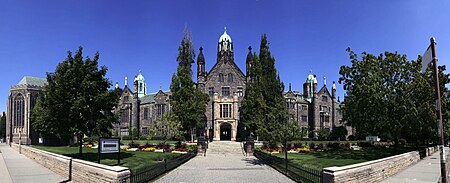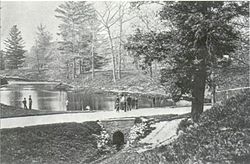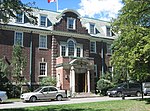Trinity College, Toronto

Trinity College (occasionally referred to as The University of Trinity College) is a college federated with the University of Toronto, founded in 1851 by Bishop John Strachan. Strachan originally intended Trinity as a university of strong Anglican alignment, after the University of Toronto severed its ties with the Church of England. After five decades as an independent institution, Trinity joined the University in 1904 as a member of its collegiate federation. Today, Trinity College consists of a secular undergraduate section and a postgraduate divinity school which is part of the Toronto School of Theology. Through its diploma granting authority in the field of divinity, Trinity maintains legal university status. Trinity hosts three of the University of Toronto Faculty of Arts and Sciences' undergraduate programs: international relations; ethics, society and law; and immunology.More than half of Trinity students graduate from the University of Toronto with distinction or high distinction. The college has produced an unusually high number of Rhodes Scholars for an institution of its size, being 43 as of 2020. Among the college's more notable collections are a seventeenth-century Flemish tapestry, two first-edition theses by Martin Luther, numerous original, signed works by Winston Churchill, a 1491 edition of Dante's Divine Comedy censored by the Spanish Inquisition, and Bishop Strachan's silver epergne.Among the University of Toronto Colleges, Trinity is notable for being the smallest by population, and for its trappings of Oxbridge heritage; the college hosts weekly formal dinners, maintains the tradition of academic gowns, manages its student government through direct democracy, and hosts a litany of clubs and societies.
Excerpt from the Wikipedia article Trinity College, Toronto (License: CC BY-SA 3.0, Authors, Images).Trinity College, Toronto
Philosopher's Walk, Toronto
Geographical coordinates (GPS) Address Nearby Places Show on map
Geographical coordinates (GPS)
| Latitude | Longitude |
|---|---|
| N 43.665555555556 ° | E -79.395833333333 ° |
Address
Trinity Quad
Philosopher's Walk
M5S 1W2 Toronto
Ontario, Canada
Open on Google Maps






